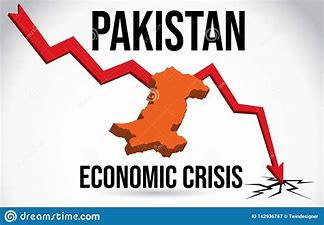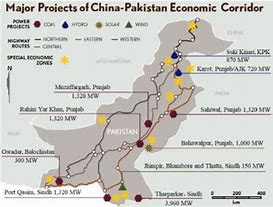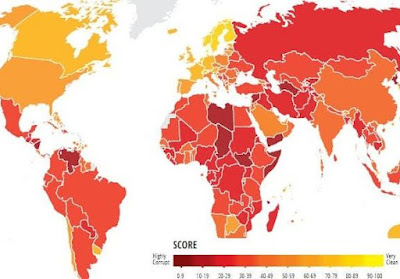Discover the complex dilemma facing Pakistan as it considers deep-sea mining for its long coastal line. Explore the sustainability and implications of this industry, including environmental concerns and the importance of mineral deposits. Learn how Pakistan can balance economic development with environmental conservation in this thought-provoking article.
1. Pakistan’s Long Coastal Line: the Attraction of Developed Countries
Pakistan is bestowed with a long coastal line that has become a centre of attraction for many developed countries like the United States and China. The interest in Pakistan’s coastal region stems from the potential of deep-sea mining, which can revolutionize the mining industry. However, a critical question arises: Should Pakistan adopt deep-sea mining as a path to development, or should it demand a moratorium to protect future generations from potential ecosystem disturbances? In this article, we will explore the concept of deep-sea mining, its sustainability, and its implications for Pakistan. By considering the perspectives of various stakeholders, we aim to shed light on the decision Pakistan faces and provide valuable insights into the path it should choose.
2. Understanding Deep Sea Mining
Definition and Process of Deep Sea Mining
Deep-sea mining refers to the process of retrieving mineral deposits from the ocean floor, specifically from depths below 200 meters. The seabed, covering approximately two-thirds of the total seafloor, holds a wealth of valuable minerals such as copper, nickel, aluminium, manganese, zinc, lithium, and cobalt. The mining process involves the use of submersible crafts equipped with giant suction pipes that stir up metallic objects the size of potatoes on the seabed. These polymetallic nodules are then sorted, with unwanted residue rinsed back into the sea.
Importance of Mineral Deposits
The growing global demand for clean-energy technologies, including wind turbines, solar panels, batteries, and smartphones, has intensified the interest in deep-sea mining. According to the World Bank, mineral production needs to increase by nearly 500% by 2050 to meet the rising demand for clean energy. The availability of these minerals in the seabed presents an opportunity for countries like Pakistan to tap into this resource and contribute to the shift toward renewable energy.
3. Environmental Concerns
Deep-sea mining raises significant environmental concerns that need to be carefully considered before making any decisions. Here are some of the key concerns:
a. Potential Impact on Ecosystems
The deep-sea ecosystem is fragile and largely unexplored, making it difficult to fully understand the potential impact of mining activities. The disturbance caused by mining operations can result in the destruction of unique habitats and the displacement of marine species. The extraction of minerals can also lead to the loss of biodiversity and disrupt the delicate balance of the ecosystem.
b. Climate Change and Carbon Storage
Deep-sea ecosystems play a crucial role in carbon storage, acting as “blue carbon” sinks that help minimize climate change. Blue carbon refers to the carbon dioxide (CO2) captured and stored by the world’s ocean and coastal ecosystems. These ecosystems, such as mangroves, seagrasses, and salt marshes, have a remarkable capacity to sequester and store carbon from the atmosphere. Blue carbon plays a crucial role in minimizing climate change by acting as a natural carbon sink, helping to reduce the concentration of greenhouse gases in the atmosphere. By understanding and preserving these valuable ecosystems, we can maximize their potential as effective tools in combating climate change. Mining activities have the potential to release stored carbon and disrupt this natural process. Additionally, the release of sediments and chemicals during mining operations can have adverse effects on nearby coral reefs and other sensitive marine ecosystems.
c. Disruption of Marine Life
Deep-sea mining can cause direct physical damage to marine organisms. Mining equipment, noise, and vibrations can harm marine life, including fish, invertebrates, and even larger species such as whales and dolphins. The long-term consequences of such disruptions are still uncertain and require further scientific research.
d. Pollution and Biodiversity
Mining activities have the potential to introduce pollutants into the marine environment. Chemicals used in the mining process, such as heavy metals and toxic compounds, can contaminate the water and impact marine organisms. Furthermore, the disposal of waste materials back into the sea may cause sedimentation and smother the seabed, affecting benthic organisms and reducing biodiversity.
4. Sustainable and Green Financing
If Pakistan decides to pursue deep-sea mining, it is crucial to prioritize sustainable and green financing mechanisms. Transparency and disclosure in financial transactions related to mining activities are essential. This ensures that the funds generated from mining operations are reinvested in environmental conservation efforts, research, and the development of renewable energy technologies.
There is also a need to address the issue of “greenwashing” in the mining industry. Greenwashing refers to the deceptive practice of presenting mining activities as environmentally friendly when, in reality, they may cause significant harm to ecosystems. Pakistan should be cautious and demand transparency from mining companies to avoid reputational risks associated with greenwashing.
5. Regulations and Stakeholder Involvement
Any decision regarding deep-sea mining should involve robust regulations and the active participation of stakeholders. The International Seabed Authority (ISA) is the global regulatory body responsible for managing and overseeing deep-sea mining activities in international waters. Pakistan should actively engage with the ISA and ensure that the necessary regulations are in place to protect the environment and the rights of local communities.
Public consultation and environmental risk assessment plans should be mandatory before granting mining licenses. Involving local communities, scientists, environmentalists, and indigenous groups in decision-making processes can provide valuable insights and help identify potential risks and mitigation measures.
6. Supporting the Renewable Energy Industry
While deep-sea mining poses environmental challenges, it also offers an opportunity to support the growing renewable energy industry. The minerals extracted from the seabed, such as cobalt, tellurium, and ferromanganese crusts, are crucial for the production of green technologies like electric vehicle batteries and solar panels. By participating in deep-sea mining, Pakistan can contribute to the global shift towards renewable energy and reduce its dependence on fossil fuels.
7. Balancing Environmental Impact and Development
To minimize the environmental impact of deep-sea mining, technological advancements and best practices should be implemented. Developing and utilizing advanced tools and robotic systems can help reduce the physical footprint of mining operations and minimize disturbances to seabed and marine life. Continuous monitoring and research are necessary to understand the long-term effects of mining activities and adapt practices accordingly.
Pakistan should prioritize a balanced approach that considers the potential benefits of deep-sea mining while safeguarding the marine environment. The government should invest in scientific research, environmental impact assessments, and sustainable management strategies to ensure that such mining activities are conducted responsibly and with minimal harm to the ocean ecosystem.
*Read more Water Pollution: Causes, Effects, and Effective Solutions for a Cleaner Environment











One Comment